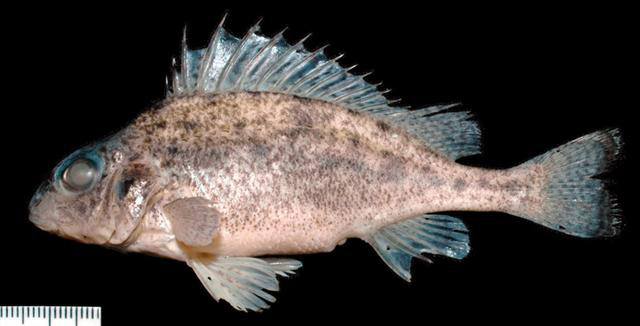| Percidae (Perches), subfamily: Percinae |
| 11.69 cm SL (male/unsexed) |
|
benthopelagic; freshwater |
| Europe: endemic to Lake Ammersee, upper Danube basin in southern Germany. |
|
Dorsal spines (total): 14-16; Dorsal soft rays (total): 10-12; Anal spines: 2-2; Anal soft rays: 5-6. Distinguished from Gymnocephalus cernua by having smaller angle between the posterior dorsal fin margin and the caudal peduncle (90-110° vs. 113-154°), larger eye diameter (10.2-12.3 % SL vs. 7.9-10.5 % SL) and an irregular pattern of large dorsolateral dark blotches vs. a pattern of small dots. Differs from Gymnocephalus cernua by having a deeper body (26.1-33.6 % SL vs. 20.1-30.7 % SL), longer base of the spinous part of the dorsal fin (36.1-41.9 % SL vs. 28.8-39.6 % SL) and higher mean and modal number of dorsal fin spines (modal 15 vs 14). Diagnosed from Gymnocephalus baloni by the combination of the following characters: larger eye diameter (10.2-12.3 % SL vs. 8.2-10.5 % SL), smaller caudal peduncle depth (7.7-8.9 % SL vs. 7.4-10.1 % SL), higher mean and modal number of pectoral fin rays (15 vs. 13) and a steeper convex dorsal profile of the snout (Ref. 84545). |
| Ripe females were collected in shallow water between 3-5 m depth in May and spawned immediately in captivity (Ref. 84545). Eggs, measuring ~1 mm in diameter, were observed on the bottom and were only weakly adhesive, but some of them were floating (Ref. 84545). |
|
Critically Endangered (CR); Date assessed: 24 August 2010 (B1ab(v)) Ref. (130435)
|
| harmless |
Source and more info: www.fishbase.org. For personal, classroom, and other internal use only. Not for publication.

